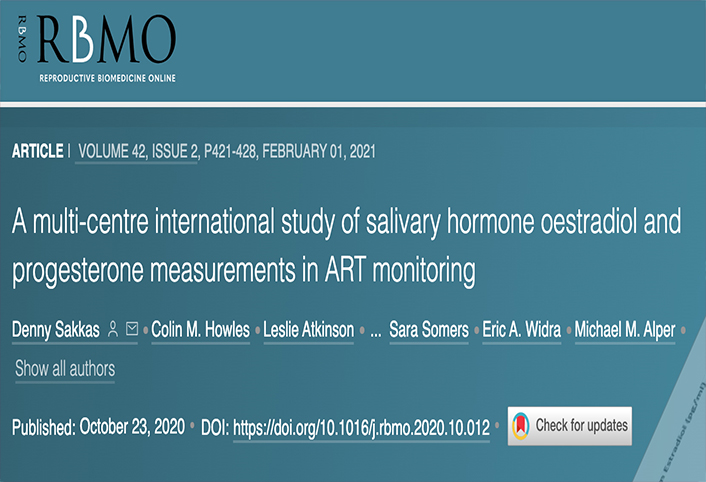
A multi-centre international study of salivary hormone oestradiol and progesterone measurements in ART monitoring
Denny Sakkas, Colin M Howles, Leslie Atkinson, Andrea Borini, Ernesto A Bosch, Crystal Bryce, Monica Cattoli, Alan BCopperman, Astrid Finet de Bantel, Brian French, Jan Gerris, Steve W Granger, Veronika Grzegorczyk-Martin, Joseph A Lee, Michael J Levy, Marla J Matin, Sara Somers, Eric A Widra, Michael M Alper
RBMO VOLUME 42, ISSUE 2, P421-428, FEBRUARY 01, 2021, Published:October 23,2020 DOI:https://doi.org/10.1016/j.rbmo.2020.10.012
Abstract
Research question: Ovarian stimulation during IVF cycles involves close monitoring of oestradiol, progesterone and ultrasound measurements of follicle growth. In contrast to blood draws, sampling saliva is less invasive. Here, a blind validation is presented of a novel saliva-based oestradiol and progesterone assay carried out in samples collected in independent IVF clinics.
Design: Concurrent serum and saliva samples were collected from 324 patients at six large independent IVF laboratories. Saliva samples were frozen and run blinded. A further 18 patients had samples collected more frequently around the time of HCG trigger. Saliva samples were analysed using an immunoassay developed with Salimetrics LLC.
Results: In total, 652 pairs of saliva and serum oestradiol were evaluated, with correlation coefficients ranging from 0.68 to 0.91. In the European clinics, a further 237 of saliva and serum progesterone samples were evaluated; however, the correlations were generally poorer, ranging from -0.02 to 0.22. In the patients collected more frequently, five out of 18 patients (27.8%) showed an immediate decrease in oestradiol after trigger. When progesterone samples were assessed after trigger, eight out of 18 (44.4%) showed a continued rise.
Conclusions: Salivary oestradiol hormone testing correlates well to serum-based assessment, whereas progesterone values, around the time of trigger, are not consistent from patient to patient.
